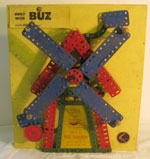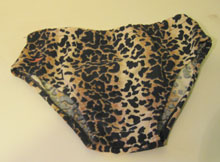This section will document selected objects, images, artworks and documents from our collection as they are researched, documented and catalogued. Particular attention is given to the more significant items in the collection.
Objects
AWA ‘Fisk’ Radiola Model 180 Valve Radio

Description
Valve radio in varnished timber plywood cabinet that served to make the object a feature in the ‘front room’ of the house; 890 x 595 x 310mm. The station dial is in the centre at the tip, with the control knobs underneath.
Provenance
The ‘Radiola Fisk series’ receivers were a leading Australian design and manufacturing achievement from 1930s and the Model R180 was introduced in 1937. This radio was purchased by Mr LW Solomon from Bebafalds’ store opposite the Sydney Town Hall in the early 1940s. Its maintenance history from March 1946 to 11 February 1967 is fully documented. The shows that the Solomon family to 16 Alleyne Street, Chatswood, probably in the early 1950s. It was donated to the Willoughby Museum in fully operating condition and remains operational.
Condition
The radio is complete, operational and the cabinet is in good condition. Part of the dial cover is out of position and needs adjusting.
Aesthetic Significance
The radio cabinet is an excellent example of Australian design and craftsmanship of the 1930s-1940s.
Scientific, Research or Technical Significance
The ‘Radiola Fisk series’ receivers were a leading Australian design and manufacturing achievement from 1930s and the Model R180 was introduced in 1937. To have an example in working order with a well-documented maintenance history contributes to its significance.
Social Significance
The 1940s and early 1950s were the ‘Golden Years’ of Australian radio with some 130 commercial stations and a similar number of ABC stations. The object helps to demonstrate the dominant role played by radio in the 1940s and early 1950s. It offered a source of information to Willoughby families through news, current affairs and educational programs, and provided the main source of entertainment in most homes at this time. Accordingly, it has significance to the Willoughby Museum as helps to interpret one of our core themes, the domestic life of Willoughby families, where radio played a key role during the 1940s and 1950s.
Representativeness
This model of radio is now very rare and we have not identified other examples in museum collections. That this example is in working order and had a detailed service record contributes further to its rarity.
Kraus Family Collection
This collection of 13 objects, together with family photographs, BUZ Builder catalogues and promotional material, is one of the most significant in our collection. Collectively it helps to tell the story of the entrepreneurial flair and ingenuity of Gus and Vic Kraus who established the firm Buzza Products to manufacture Morse code sets for the Australian and US Armies during World War II.
The firm is better known for its BUZ Builder Sets and BUZ Gear Sets, which from 1954 were manufactured at the Buzza Products factory in the Artarmon Industrial Area within Willoughby. Collectively, the objects, photographs, albums and documents provide a wonderful resource that helps to tell the story of this iconic Willoughby industry.
 |
Brass Buzza Products brass plate No: 2011.10.1 Dimensions: 165 x 415 x 1mm Excellent condition with no blemishes Original brass plate from Artarmon factory Donor: Beryl Kraus and family |
 |
BUZ Gear Set in original box No. 2011.10.2 Dimensions: 23 x 424 x 430mm Mint condition Donor: Beryl Kraus and family |
 |
BUZ Builder model windmill No. 2011.104 Dimensions: 394 x 344 x 195mm On masonite with provision for electric motor. Used at BUZ promotional displays. Donor: Beryl Kraus and family |
 |
BUZ Builder Set No. 5 No. 2011.10.5 Dimensions: 69 x 427 x 275mm Mint condition in original red metal box Donor: Beryl Kraus and family |
 |
BUZ Builder model truck No. 2011010.7 Dimensions: 96 x 295 x 96mm Model made by Max Crago Donor: Max Crago |
 |
Take-a-Risk game No. 2011.10.11 Dimensions: 39 x 425 x 277mm In original box with minor deterioration Donor: Beryl Kraus and family |
 |
BUZ Album of Models (Sets 1-9) No. Dimensions: 190 x 279mm hard cover Donor: Beryl Kraus and family |
 |
Photo of BUZ Stand Photo taken at Melbourne Toy Fair, February 1962 |
 |
BUZ Products electric potters’ wheel
Can you help provide us with information about this BUZ product? |
 |
BUZ Products manual potters’ wheel
Can you help provide us with information about this BUZ product? |
MIGNON 4 Writing Machine

Mignon typewriters were manufactured in Berlin, Germany, by Allgemeinen Elektrizitaets-Gesellschaft (AEG) from 1905. The Model 4 was the most successful, with some 200,000 being built between 1923 and 1934, mainly for European and North American market. They were comparatively rare in Australia, but our example was imported by N Le Roy Tracy Ltd of Martin Place, Sydney. It was owned by the Papillo family of 24 Johnson Street, Chatswood NSW, and was donated to the museum by Heather Papillo.
The Speedo Story

Donor Philip Hickie.
- The Speedo Story (2011.1), a commemorative book produced by the company the opening of the new complex by His Excellency the Governor of New South Wales Lieutenant-General Sir John Northcott, on 21 February 1957.
- A pair of Speedo ‘Broadband’ swimmers (2011.2) donated by a prominent Willoughby citizen;
- Men’s and women’s Speedo swimmers, blue & green stripe (2011/3/4); and
- Speedo sports wear.
